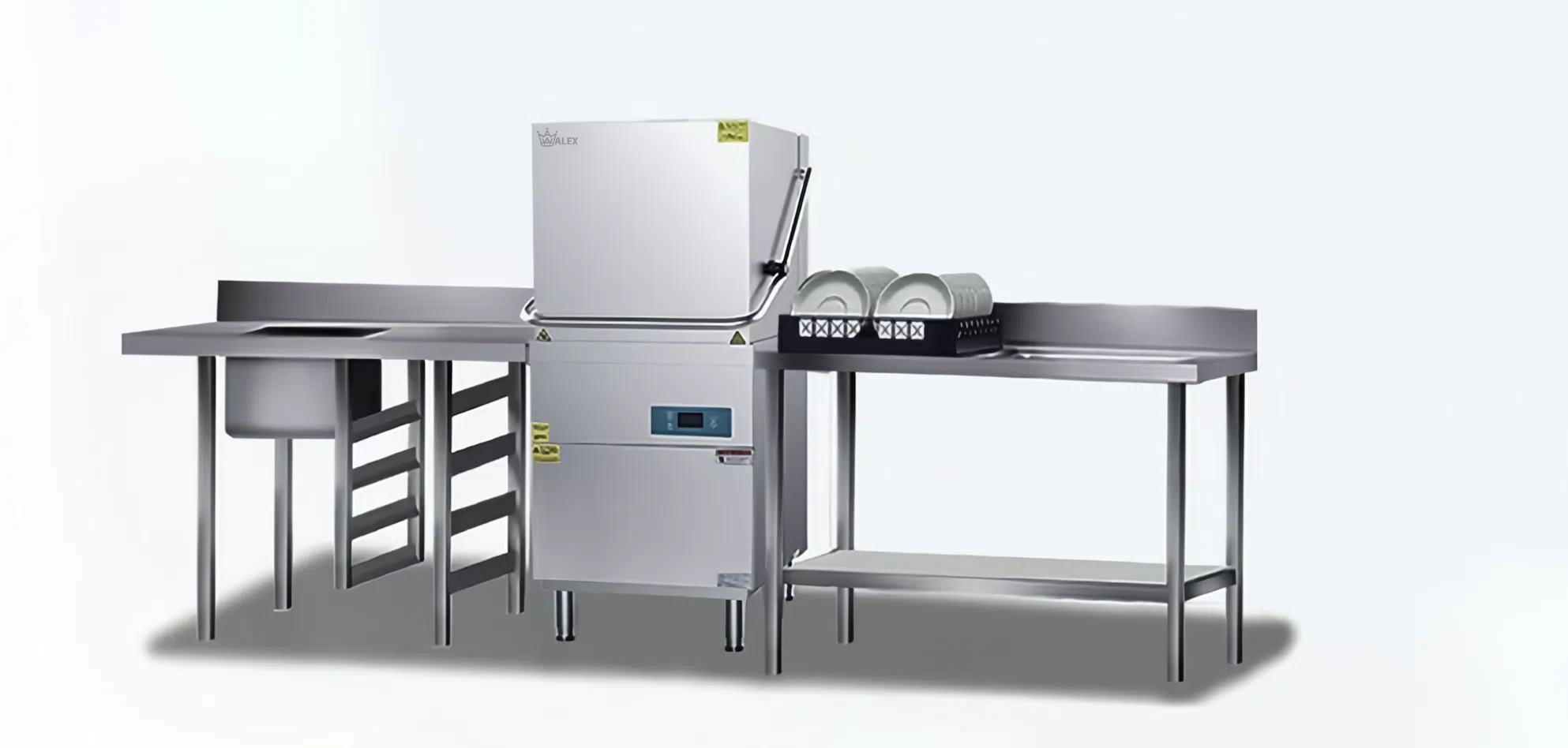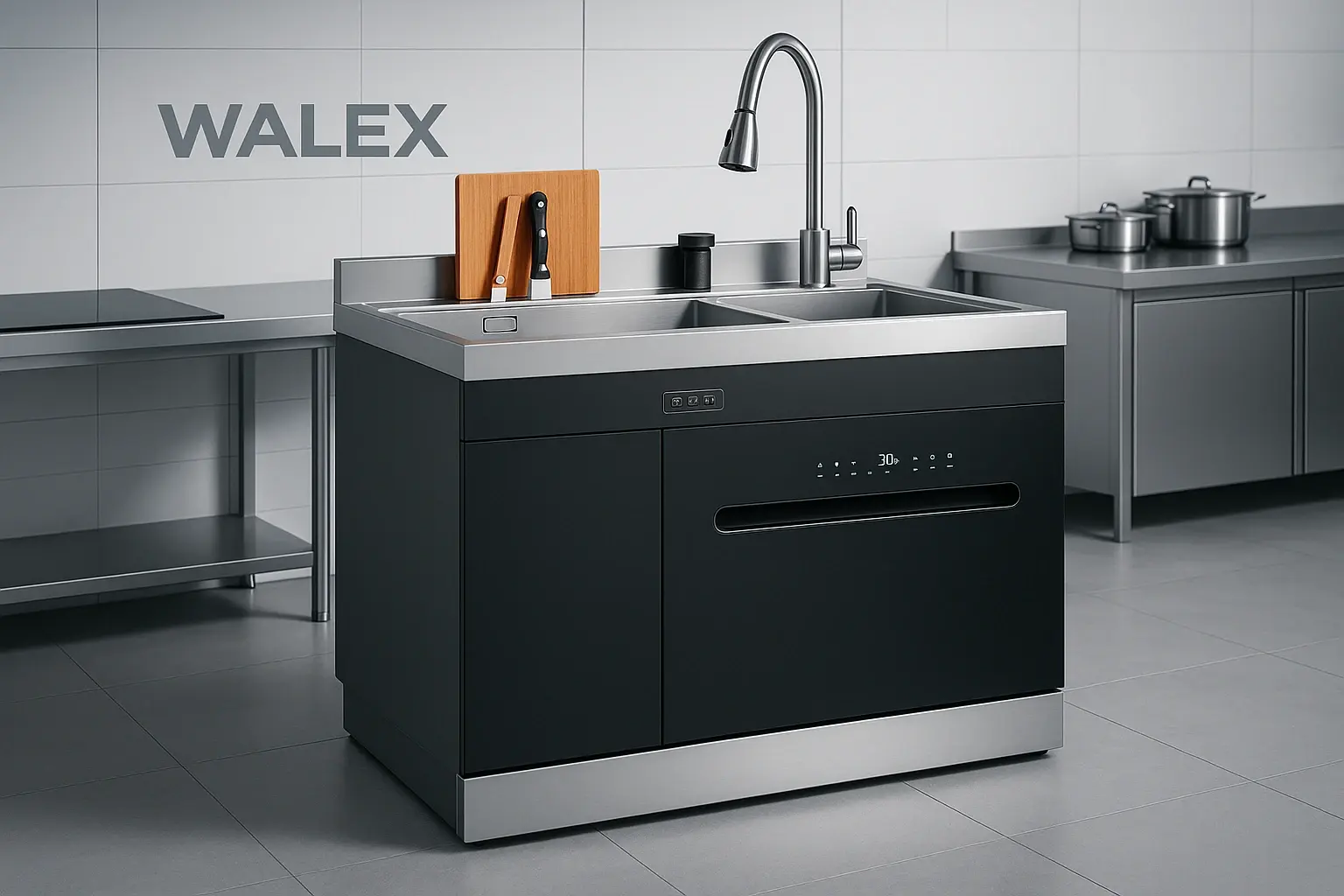In today’s competitive food service industry, operational efficiency and hygiene standards can make or break a business. Whether you’re running a bustling restaurant, managing a hospital cafeteria, or operating a school dining facility, one piece of equipment stands as absolutely critical: the commercial dishwasher. This investment goes far beyond simple convenience—it’s a fundamental requirement for maintaining food safety standards, controlling labor costs, and ensuring customer satisfaction.

A modern stainless steel pass-through commercial dishwasher with racks of white plates
Understanding Commercial Dishwashers: Purpose-Built for Performance
A commercial dishwasher is a heavy-duty, high-capacity cleaning system specifically designed to handle the demanding requirements of food service operations. Unlike residential units, these machines are engineered to process hundreds or thousands of dishes, glasses, and utensils daily while maintaining strict sanitation standards required by health departments.
Commercial dishwashers operate on fundamentally different principles than their domestic counterparts. They utilize higher water temperatures, specialized chemical dispensing systems, and rapid cycle times to achieve superior cleaning and sanitization results. The technology incorporated into these machines reflects decades of engineering focused on meeting the unique challenges of commercial food service environments.
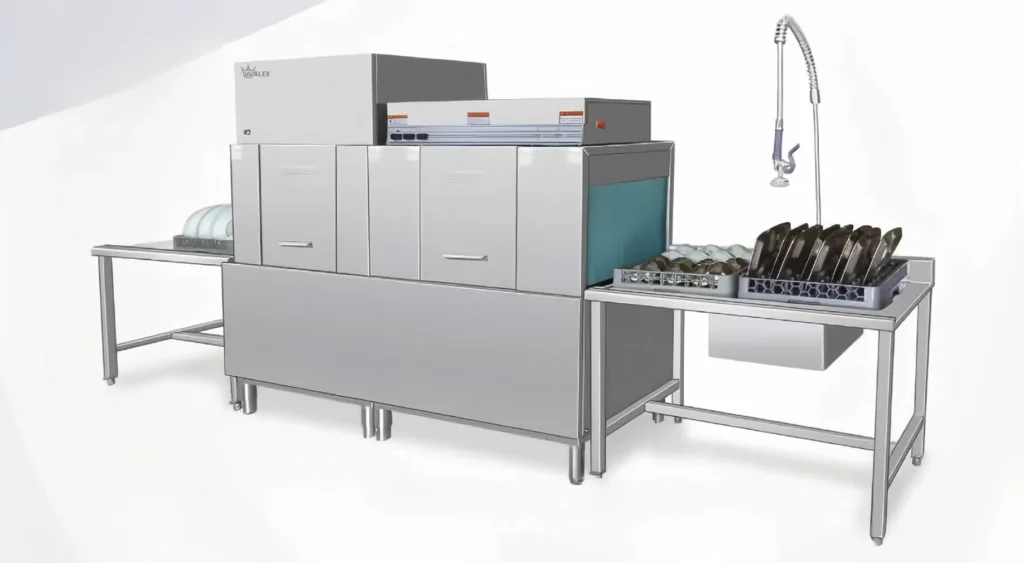
A large stainless steel commercial conveyor dishwasher in a professional kitchen
The Critical Differences: Commercial vs. Residential Performance
The most immediately apparent difference between commercial and residential dishwashers lies in their cycle times. While a typical home dishwasher requires 30-90 minutes to complete a full cycle, commercial units operate at dramatically faster speeds.
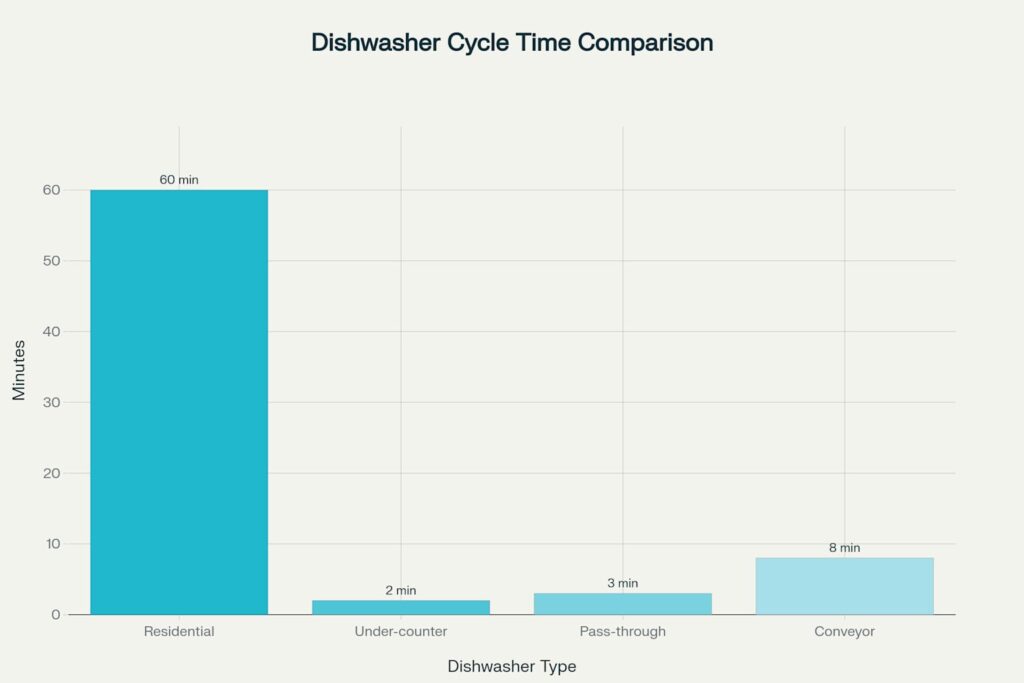
Dishwasher Cycle Time Comparison: Commercial vs. Residential
Under-counter commercial dishwashers complete cycles in just 60-120 seconds, pass-through models finish in 2-3 minutes, and conveyor systems can process continuous loads in 1-4 minute cycles. This speed advantage translates directly into operational benefits: restaurants can turn tables faster, cafeterias can serve more customers during peak hours, and kitchen staff can maintain adequate clean dish supplies even during the busiest service periods.
Temperature Standards: The Foundation of Food Safety
Commercial dishwashers operate at significantly higher temperatures than residential units, a critical difference for meeting health department requirements. The FDA Food Code mandates that commercial dishwashers achieve a utensil surface temperature of 71°C (160°F) during the sanitization cycle.
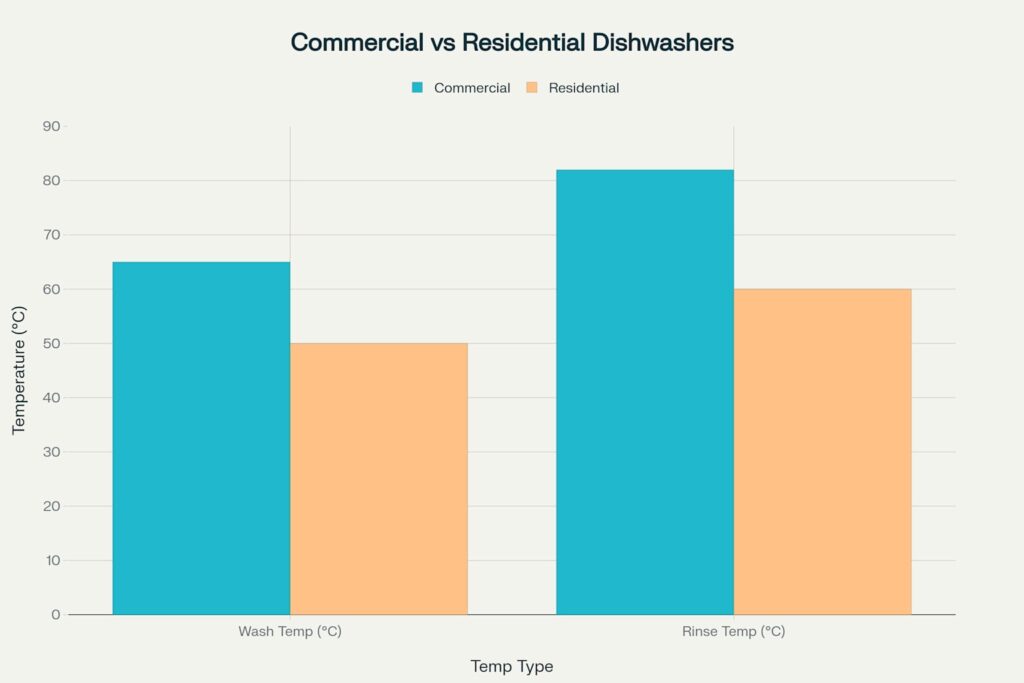
Commercial vs. Residential Dishwasher Temperature Comparison
High-temperature commercial dishwashers typically wash at 65-70°C and rinse at 82-85°C, while residential units operate at much lower temperatures of 50-60°C. This temperature difference is not merely technical—it’s the distinction between meeting legal sanitization requirements and failing health inspections.
Professional sanitization requires either high-temperature rinse cycles reaching 82°C for at least 10 seconds, or chemical sanitization systems that maintain precise chemical concentrations. Commercial dishwashers are designed to consistently achieve these standards, while residential units cannot reach the necessary temperatures for commercial food safety compliance.
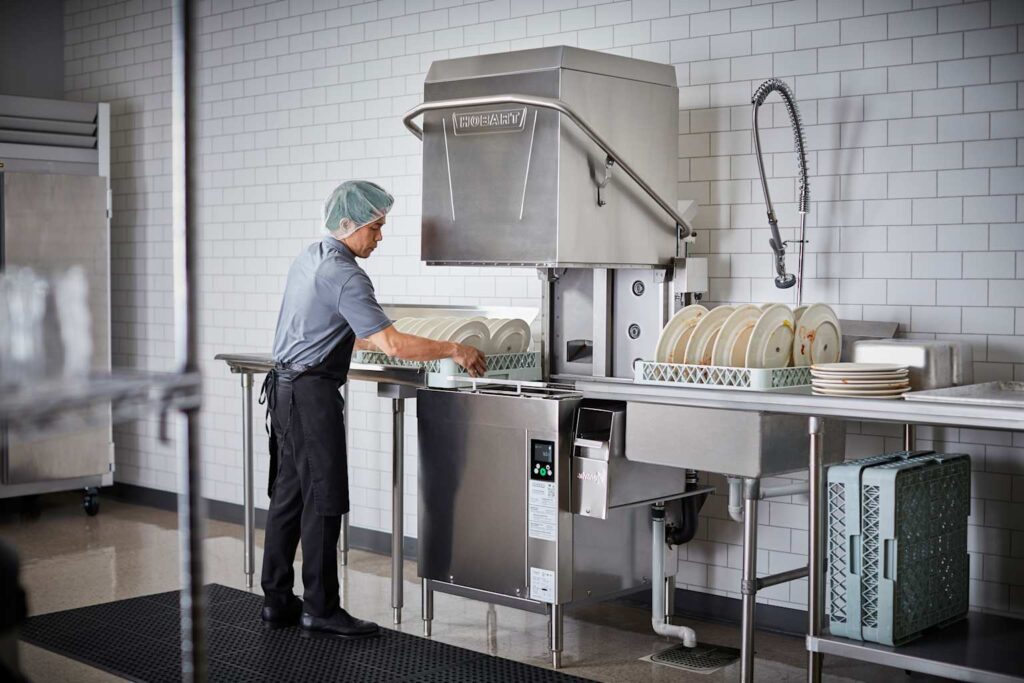
A kitchen worker operates a Hobart commercial dishwasher in a busy restaurant kitchen
Efficiency and Capacity: Built for Volume
Commercial dishwashers are engineered to handle massive daily volumes that would quickly overwhelm residential units. A typical under-counter commercial unit can process 35 racks per hour, while conveyor systems can handle 425 racks hourly. Flight-type dishwashers in large operations can process up to 11,450 plates per hour.
This capacity difference extends beyond mere numbers—it represents the fundamental design philosophy of commercial equipment. Commercial dishwashers feature robust construction, specialized rack systems, and advanced filtration that allows them to operate continuously for 8-12 hours daily without performance degradation.

A modern commercial kitchen dishwashing station with stainless steel sinks, high-pressure spray faucet, and organized shelving for efficient cleaning and sanitation
Business Benefits: Quantifying the Investment Return
Labor Cost Reduction
One of the most significant benefits of commercial dishwashers is substantial labor savings. Industry data shows that commercial dishwashers with advanced soil removal technology can reduce dishroom labor by 20-30%. For a 600-person cafeteria, this translates to eliminating approximately two dishwashing positions, saving around 72,000 yuan annually in labor costs.
The Automatic Soil Removal (ASR) technology found in modern commercial dishwashers reduces pre-scraping time by up to 30 seconds per rack. When calculated across daily operations, this time savings allows staff to focus on other productive tasks while maintaining faster dish turnover.
Operational Efficiency Gains
Commercial dishwashers dramatically improve operational efficiency beyond labor savings. Faster cycle times mean restaurants can maintain adequate clean dish supplies during peak service periods, reducing the need for excessive dishware inventory. This efficiency translates into faster table turnover, increased customer capacity, and ultimately higher revenue potential.
Energy-efficient commercial dishwashers can reduce water consumption by up to 90% compared to older models, with some operations achieving payback periods of less than one year through utility savings alone. ENERGY STAR certified commercial dishwashers are 17% more energy efficient than standard models, providing ongoing operational cost reductions.
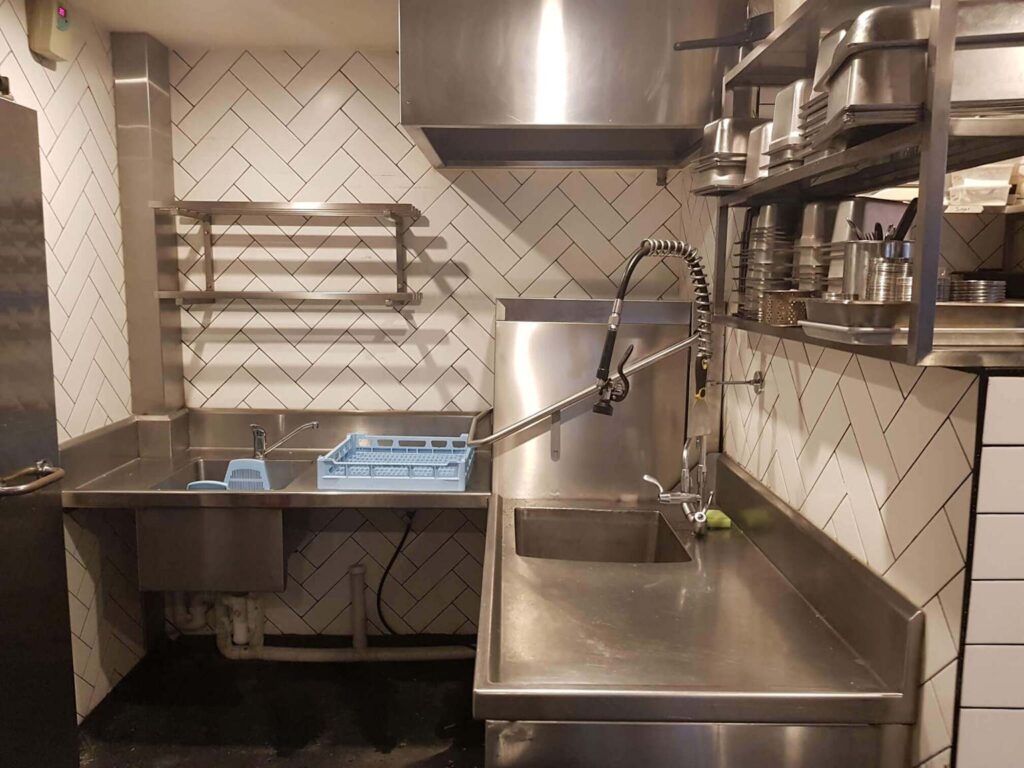
Commercial kitchen dishwashing station with stainless steel sinks and pre-rinse spray faucet for efficient cleaning
Return on Investment Analysis
Industry case studies demonstrate impressive ROI for commercial dishwasher investments. One documented example shows a food service operation achieving over 50% ROI, recovering the initial investment within six months. For typical mid-sized operations, commercial dishwashers with initial costs of $20,000-50,000 can generate annual savings of $50,000-80,000 through combined labor, utility, and efficiency improvements.
The Total Cost of Ownership (TCO) analysis reveals that professional commercial dishwashers, while more expensive initially, provide superior long-term value compared to cheaper alternatives. Professional units offer predictable maintenance costs, reliable technical support, and consistent performance that cheaper models cannot match.
Industry Standards and Compliance Requirements
Health Department Regulations
Commercial food service operations must comply with strict health department regulations that residential dishwashers cannot meet. The FDA Food Code requires commercial operations to achieve specific sanitization standards, including maintaining utensil surface temperatures of 71°C (160°F) for effective pathogen elimination.
Health inspectors regularly verify that commercial dishwashers meet these temperature requirements using irreversible registering temperature indicators. Failure to maintain proper sanitization temperatures can result in health code violations, fines, and potential closure orders.
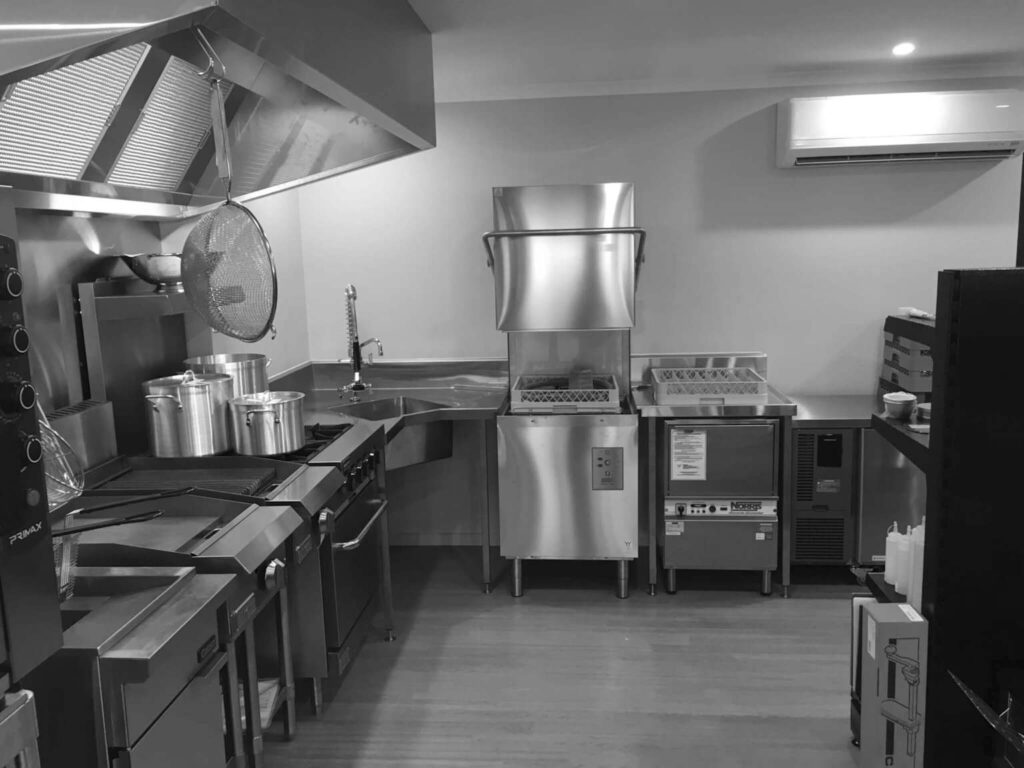
A commercial kitchen equipped with a large stainless steel commercial dishwasher and industrial cooking stations
NSF Certification Standards
ENERGY STAR certified commercial dishwashers also carry NSF certification, meaning they pass rigorous sanitization testing in addition to meeting energy efficiency standards. This dual certification ensures that businesses receive equipment that meets both operational efficiency and food safety requirements.
The global commercial dishwasher market, valued at $2.73 billion in 2023, continues growing at 3.4% annually, driven by increasing demand for equipment that meets evolving food safety standards. This market growth reflects the industry’s recognition that commercial dishwashers are essential infrastructure, not optional equipment.
Specialized Applications and Adaptability
Healthcare and Institutional Settings
Healthcare facilities, schools, and other institutional settings have particularly stringent requirements for dishware sanitization. Commercial dishwashers in these environments must consistently eliminate pathogens that could cause cross-contamination or healthcare-associated infections.
Modern commercial dishwashers offer specialized features for these applications, including extended high-temperature rinse cycles, enhanced chemical dispensing systems, and documentation capabilities for compliance reporting. These features ensure that institutions can meet regulatory requirements while maintaining operational efficiency.

A detailed view of a commercial kitchen dishwashing station with specialized racks and conveyor systems.
Multi-Functional Capabilities
Contemporary commercial dishwashers integrate multiple functions beyond basic washing, including automated chemical dispensing, self-cleaning cycles, and advanced soil removal systems. These multi-functional capabilities reduce the need for additional equipment and staff training while improving overall operational efficiency.
The trend toward smart commercial dishwashers includes features like remote monitoring, predictive maintenance alerts, and automated reporting systems that help businesses optimize operations and prevent costly downtime.
Making the Investment Decision Evaluating Your Business Needs
The decision to invest in a commercial dishwasher should be based on several key factors: daily dish volume, peak service demands, labor costs, and regulatory requirements. Businesses serving more than 100 meals daily typically find commercial dishwashers essential for maintaining service quality and meeting health standards.
Space considerations also play a crucial role, with under-counter models suitable for smaller operations and pass-through or conveyor systems necessary for high-volume establishments. The initial investment, ranging from $2,000 for basic under-counter units to over $20,000 for conveyor systems, must be evaluated against long-term operational benefits.

A commercial dishwashing station featuring a large stainless steel dishwasher and a three-compartment sink setup, typical of a professional kitchen environment
Long-Term Value Proposition
The value proposition of commercial dishwashers extends far beyond immediate operational benefits. These machines represent investment in food safety compliance, operational efficiency, and business reputation. In an industry where a single food safety incident can destroy years of reputation building, commercial dishwashers provide essential risk mitigation.
Furthermore, as labor costs continue rising globally, the automation provided by commercial dishwashers becomes increasingly valuable. Businesses that invest in proper commercial dishwashing equipment position themselves for sustainable growth while maintaining the highest standards of food safety and operational efficiency.
Conclusion
Commercial dishwashers represent far more than mere kitchen equipment—they are strategic investments in food safety, operational efficiency, and business sustainability. The dramatic differences in speed, sanitization capability, and efficiency between commercial and residential units make professional dishwashers essential for any serious food service operation.
With documented ROI often exceeding 50% and payback periods under one year, commercial dishwashers deliver quantifiable value while ensuring compliance with health regulations. As the food service industry continues evolving toward higher efficiency and stricter safety standards, businesses that invest in quality commercial dishwashing equipment will find themselves better positioned for long-term success.
The question is not whether your business can afford a commercial dishwasher, but whether it can afford to operate without one.
